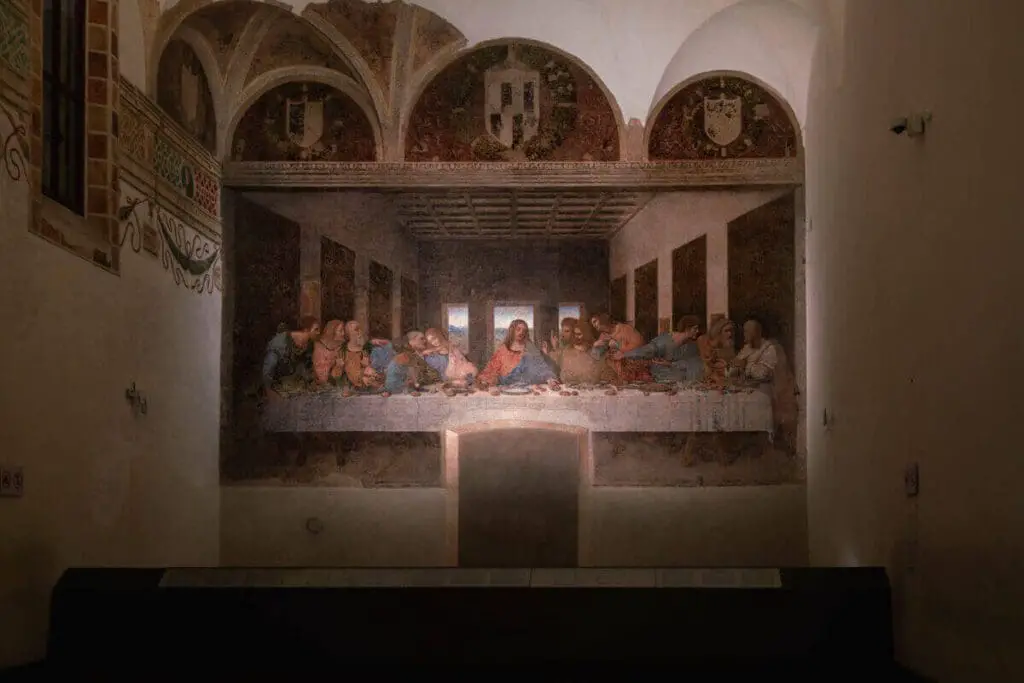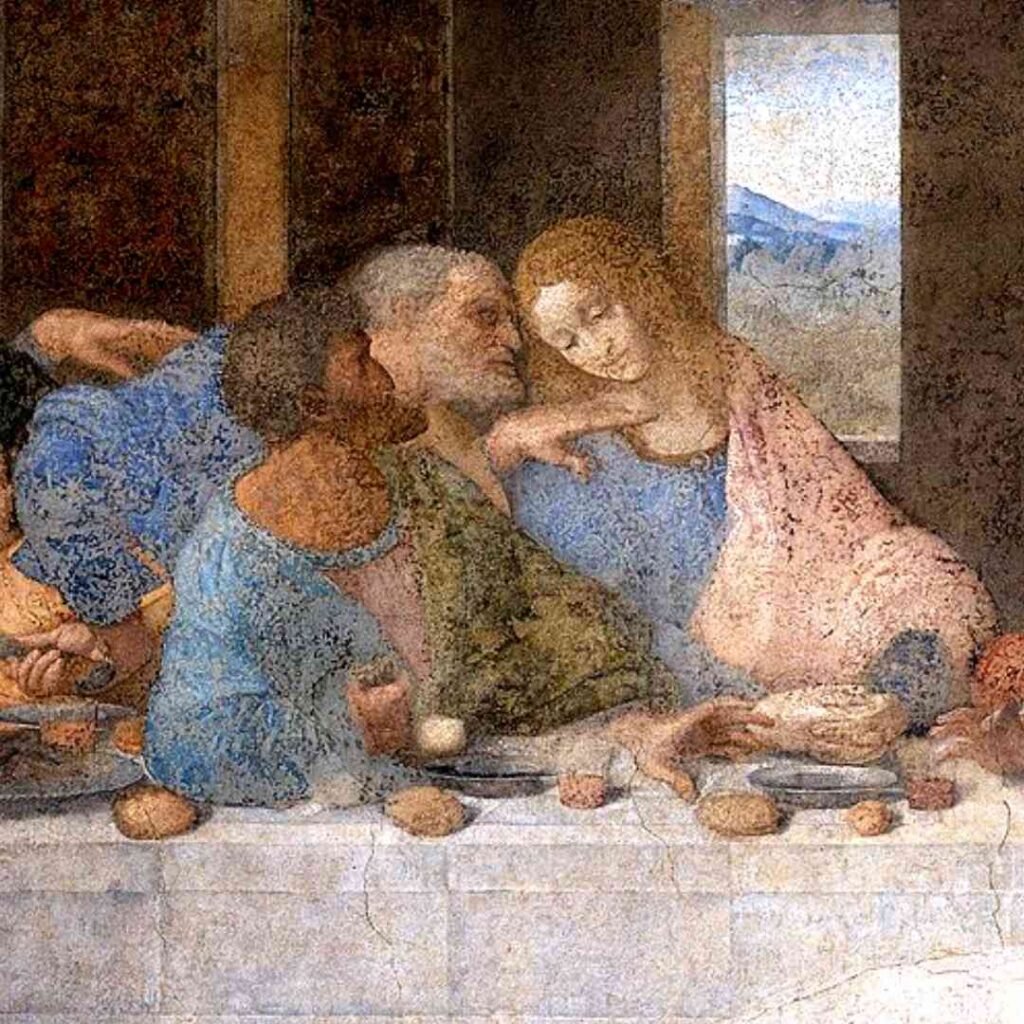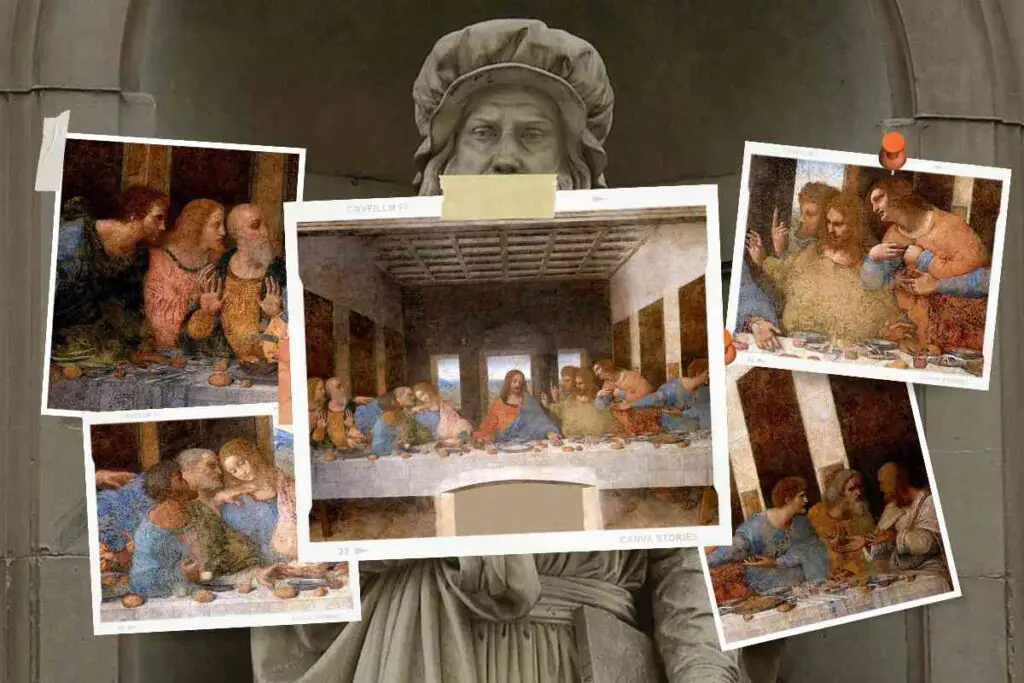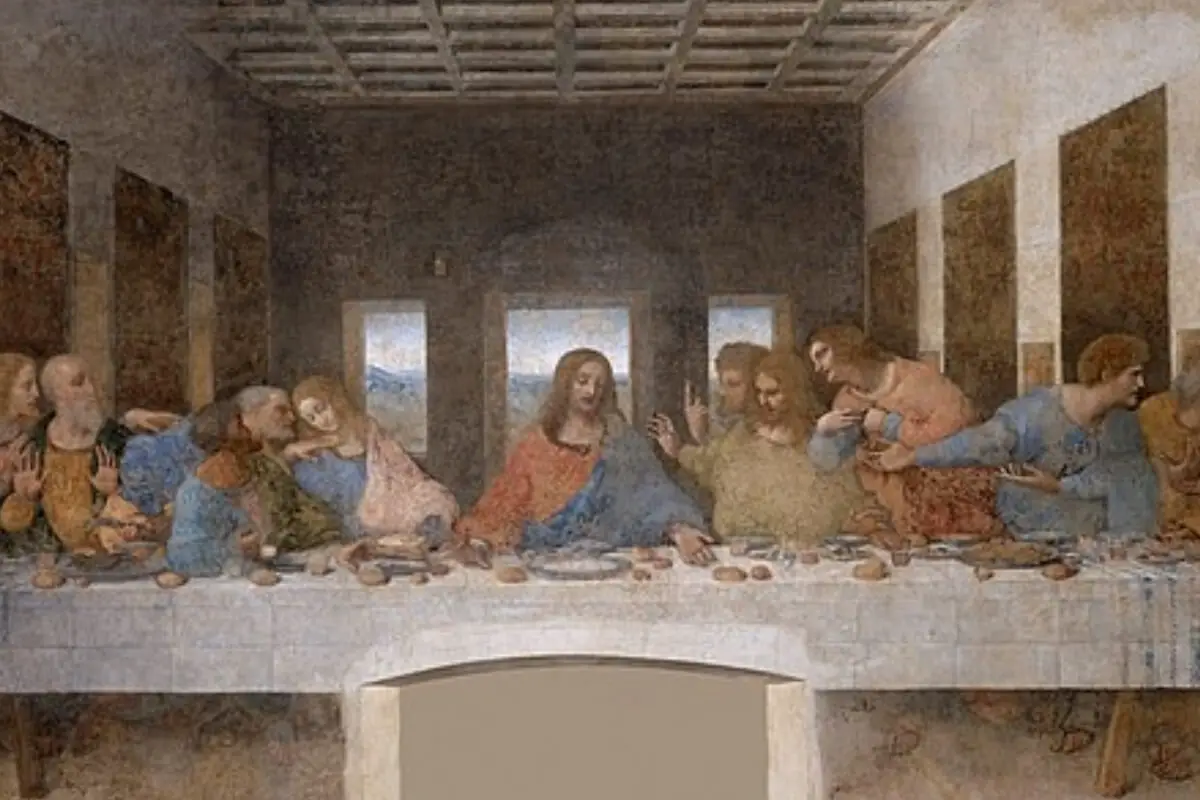Amid the vibrant flurry of innovation characterizing the late 15th century in Italy, a masterwork was born under the steady hand of Leonardo da Vinci: The Last Supper. Nestled in the refectory of the Convent of Santa Maria delle Grazie in Milan, this monumental mural emerged during a time of remarkable cultural rebirth.
The Renaissance period, marked by a genuine resurgence of interest in the classical arts and sciences, provided the perfect crucible for da Vinci’s unparalleled artistic talents. Funded by the influential Ludovico Sforza, the Duke of Milan, Leonardo’s The Last Supper stands not merely as a religious tableau but as a testament to the era’s spirit of exploration and intellectual curiosity. As we delve into the layers of history and craft behind this iconic creation, we uncover a narrative steeped in divine inspiration and human ingenuity.
Table of Contents
- Historical Context of The Last Supper
- Artistic Techniques in The Last Supper
- Symbolism and Religious Interpretations
- The Last Supper’s Influence and Legacy
- Related Questions
Historical Context of The Last Supper
The Enigmatic Splendor of the High Renaissance: Decoding the Era of “The Last Supper”
When one ventures to unearth the origins of “The Last Supper,” a fresco that stands among the crowning achievements of Western art, they are inevitably thrust into the vibrant epoch of the High Renaissance.
Known for its fervent embrace of humanism, refined aesthetic principles, and the adoration of classical antiquity, the High Renaissance constitutes the pinnacle of artistic innovation.
Leonardo da Vinci, a polymath of unparalleled genius, conceived “The Last Supper” during the late 15th century in Milan, Italy, under the patronage of Ludovico Sforza. Explicitly dated from 1495 to 1498, the masterpiece emerges from an era that championed artistic virtuosity, balance, and harmonic proportion.

The period regarded as the High Renaissance, approximately 1490 to 1527, was marked by an exceptional concurrence of mastery. Artists such as Michelangelo, Raphael, and Leonardo himself cultivated a milieu of intellectual exchange that propelled artistic strides toward realism and emotive expression.
This era’s fascination with achieving the perfect harmony between the representation of the natural world and the expression of the human condition is reflected most poignantly in “The Last Supper.”
This masterpiece elucidates the High Renaissance’s quest to overcome the limitations of preceding styles, such as the Early Renaissance’s more rigid and symbolic nature. Leonardo’s genius in linear perspective, chiaroscuro (light and dark contrast), and anatomical precision render a scenario that is both architecturally convincing and emotionally compelling.
The fresco’s depiction of Christ’s final meal with his apostles is rife with human emotion, capturing a moment of high drama with each apostle rendered in a psychological portrayal that is as complex as divine. It’s a salient example of how High Renaissance artists placed human experience at the heart of their work.
Leonardo’s delicate interplay of light and shadow foreshadows the Mannerist preoccupation with drama and complexity that would come after the High Renaissance.
Significantly, “The Last Supper” highlights the era’s innovative techniques. Leonardo’s experimental use of tempera and oil on dry plaster, diverging from traditional fresco methods, has deteriorated the work over the centuries.
Yet, this selfsame fragility imparts a metaphor for the High Renaissance itself—a brilliant flash of human achievement that burned brightly but briefly, only to leave its indelible mark on the tapestry of art history.
As we reflect on “The Last Supper,” we are reminded of the sheer magnificence of the High Renaissance and its vision to envelop the viewer in an experience that transcends time, ushering them into a world where beauty and truth are inextricably intertwined. We receive a timeless gift of this magnificent era through Leonardo’s masterpiece—a testament to humanity’s enduring quest for artistic perfection.

Artistic Techniques in The Last Supper
Leonardo da Vinci’s “The Last Supper” is a monolithic beacon in the chronicle of art, casting a long shadow that shapes the course of Western art centuries after its creation.
Situated within the refectory of the Convent of Santa Maria delle Grazie in Milan, this monumental fresco transcends the traditional boundaries of religious art by employing groundbreaking compositional techniques and its intricate narrative expression.
Central to da Vinci’s revolutionary approach in “The Last Supper” is the masterful use of perspective. Leonardo’s implementation of the one-point perspective, wherein all lines converge at the figure of Christ at the center of the tableau, serves not merely as a method to create an illusion of depth but also as a theological statement underscoring the spiritual importance of the Savior.
This technique orchestrates a harmonic balance between the depicted scene’s spatial realism and its content’s symbolic resonance.
Furthermore, Leonardo’s acute sensitivity to the intricacies of human emotion manifests in the apostles’ distinct personalities and reactions as they respond to Christ’s foreboding declaration of betrayal.
Here, one witnesses a nuanced portrayal of psychological dynamics, each disciple characterized by a unique gesture, expression, or interaction with the others — a symphony of human sentiment captured in pigment and plaster.
This fresco also catalyzed a paradigm shift in depicting scriptural narratives by introducing a level of drama and immediacy previously unseen. The dramatic tension is palpable, as if those in the scene are oblivious to the observer’s presence, locked in a moment of profound prognostication.
In doing so, Leonardo breaches the fourth wall, inviting viewers to step into the narrative space and partake in the solemn ambiance of this significant biblical moment.
Regarding technical innovation, “The Last Supper” is notable for Leonardo’s experimental approach to fresco painting. Venturing beyond the conventional buon fresco technique, which involved applying pigment to wet plaster, he instead endeavored to work on a dry surface, allowing for greater detail and a more comprehensive range of subtleties in color.
Though this method ultimately contributed to the fresco’s lamented deterioration, it attests to Leonardo’s relentless pursuit of artistic excellence, unbound by the conventions of his time.
The very methodology da Vinci employed underscores the High Renaissance’s valuing of scientific inquiry alongside artistic prowess. His melding of empirical observation with the creative process led to an art form that reflected and informed the intellectual zeitgeist. In this ethos, art, and science are inextricably linked in the pursuit of understanding the human condition and the broader world.
Essentially, “The Last Supper” embodies the consummate synthesis of form, content, and innovation — a quintessential representation of the High Renaissance spirit. Da Vinci’s treatment of this canonical biblical episode transcends mere replication of tradition, challenging and expanding visual narrative possibilities and elevating the artist’s role to that of an intellectual and visionary.
Though the years have not been kind to Leonardo’s delicate experiment, the essence of its revolutions — be it in perspective, emotion, narrative tension, or technical execution — persists, positioning “The Last Supper” not only as a remarkable testament to one artist’s genius but as a transformative force in the annals of art history.

Symbolism and Religious Interpretations
Delving deeper into the intricate layers of “The Last Supper,” one may uncover a tapestry of hidden meanings that resonate with symbolic profundity. Encoded within the confines of this revered masterwork are narrative facets that whisper tales far beyond the Biblical scene they ostensibly represent.
At the composition’s heart lies a tapestry of interactions meticulously orchestrated by da Vinci’s discerning eye. Each apostle, elegantly arranged around Christ, echoes a symphony of human response to the revelation of betrayal.
These reactions are not arbitrary; they illustrate the varied spectrum of human emotions – shock, disbelief, anger, and sorrow – that contribute to the theological and humanistic underpinnings of the piece.
Furthermore, “The Last Supper” is rife with symbolic numerology. The grouping of the disciples into trios, the use of three windows in the background, and Christ’s positioning all hold significant numerological relevance, nodding to the Trinity and enhancing the spiritual narrative through visual harmony.
Amidst the immediacy of narrative drama, da Vinci also subtly includes iconographic elements that have spurred vigorous debate amongst art historians. Including what appears to be a spilled salt container near Judas has led some to speculate its representation of lousy luck or sin, foreshadowing his impending betrayal.
On the table, an arrangement of fish, bread, and wine lay plentiful, providing a vivid still-life within the scene and a symbolic reference to Christian eucharistic elements.
Da Vinci’s penchant for dichotomy is palpable. The geometric harmony exists alongside chaos of emotion, while the divine mingles with the human. Examined closely, even the table layout, a Euclidean representation of stability and symmetry, contrasts with the organic, flowing robes of shock and dismay worn by the apostles.

The positioning of the characters may also allude to broader implications. Judas, traditionally isolated in Last Supper depictions, is integrated into the group but shrouded in shadow, his face bearing the sole expression turned away from the viewer – a stark visual boundary of his role and fate.
One cannot ignore the influence of the celestial in da Vinci’s work. “The Last Supper” is said to embed astrological symbolism, with some proposing that the apostles correspond to zodiac signs, attributing a cosmic dimension to the gathering.
Mirroring the discourse of its time, “The Last Supper” invisibly inscribes the scientific inquiries and discoveries surging during the Renaissance. The study of light, human anatomy, and the natural world, pervasive in da Vinci’s oeuvre, converge in this fresco, offering a silent but powerful testament to the melding of empirical observation and artistic endeavor.
To witness “The Last Supper” is to embark on a quest for meaning that extends beyond the divine revelation of the Scriptures into a realm where art serves as a vessel for multifaceted interpretation.
It is a realm where every element, every glance, and every gesture becomes a clue to a larger, enduring mystery – a legacy bestowed upon the corridors of time by Leonardo da Vinci’s unparalleled genius.

The Last Supper’s Influence and Legacy
The Last Supper” by Leonardo da Vinci is not merely a transcendent work of the High Renaissance; it is a cornerstone of artistic expression, influencing countless generations. Beyond the vivid emotions and the apostles’ interactions, a deeper matrix of meaning is often encoded within the symbolic numerology that permeates the composition.
The gathering of the Twelve Apostles in groups of three, the Trinity, and the use of the numbers four and twelve themselves create a theological resonance that speaks to the sacred nature of the scene depicted.
Moreover, the iconographic elements within the painting invite viewers into a realm of speculation and scholarly debate. These symbols enrich Leonardo’s illumination of the Christian narrative, each potential meaning adding layers of depth to the work. This complex iconography invites perpetual discovery, encouraging audiences to return and seek new meaning.
One cannot overlook the orchestration of geometric harmony juxtaposed against the turbulent emotions captured at the moment of Christ’s betrayal revelation. This dichotomy creates a startling dynamism within the frame of the canvas—an eternal struggle between the divine order and human frailty.
The enigmatic Judas is strategically placed to inject tension, his position in shadow acting as a counterbalance to the radiance of Christ, creating a potent visual and moral contrast within the painting. This careful arrangement of characters further enriches the narrative complexity, transforming a scriptural moment into a poignant human drama.
Additionally, the celestial and astrological symbolism interwoven across the tableau reflects the Renaissance fascination with the cosmos and the influence of heavenly bodies upon the earth. Leonardo’s exploration of these scientific phenomena is seamlessly integrated, signaling the period’s deep reverence for the natural world’s secrets.
The fusion of art and science—an inquiry into optics, geometry, and anatomy—delineates the profound intellectual curiosity driving the brilliance of the High Renaissance. It was a time when art was not merely an aesthetic endeavor but an embodiment of humanity’s relentless quest for knowledge and the divine.
“The Last Supper” remains an enigmatic masterpiece, a vessel for myriad interpretations. Its enduring mystery and the open invitation for audiences to engage with its intricacies ensure its place in the annals of art history.
Leonardo’s magnum opus is a testament to his genius and the human spirit’s capacity to imbue art with the profoundest aspects of intellect and emotion.

Leonardo da Vinci’s The Last Supper remains one of the most poignant visual narratives ever conceived on canvas, embodying a masterful synthesis of artistic innovation, symbolic complexity, and profound historical significance.
As its legacy endures through the echoes of time, the painting continues to captivate and inspire, challenge, and provoke, serving as a mirror reflecting humanity’s quest for meaning and beauty. While the whispers of the past resonate within its faded pigments, The Last Supper holds steadfast as a pivotal anchor in the vast sea of art history, inviting endless discovery and contemplation.
The ongoing saga of its preservation is as much a testament to our reverence for artistic heritage as it reminds us of the fragile impermanence of our endeavors against the relentless march of time.
Anita Louise Art is dedicated to art education, great artists, and inspiring others to find and create their art. We love art that uplifts and inspires. #ArtToMakeYouSmile! #ArtToMakeYouHappy!
If you want to see any of my art, you can find out more by clicking here. If you are interested in what inspires me and my paintings, you can discover more by clicking here.
We have a free newsletter and would love you to be part of our community; you can subscribe to the newsletter by clicking here. If you have any questions, I would be happy to talk to you. You can reach me, Anita, by clicking here.
Subscribe to our Anita Louise Art YouTube Channel filled with great videos and information by clicking here.
Join us for our podcast “5 Minutes With Art.” Spend just 5 minutes a week with us to discover and learn about great art and artists. You can find out more about our podcast by clicking here.
Related Questions
What Did Leonardo da Vinci Contribute To Medicine?
Leonardo da Vinci contributed a lot to the medical field of study. His work contributed to our understanding of anatomy, medical physics, biomedical engineering, and neuroscience. He was fascinated with the human body as an artist and scientist.
By clicking here, you can learn more by reading What Did Leonardo da Vinci Contribute To Medicine?
What Inspired Leonardo da Vinci To Paint The Last Supper?
Duke Ludovico Sforza commissioned Leonardo to paint the Last Supper mural. What makes the Last Supper mural so unique is that he painted it at the exact time when Christ told the Apostles during The Last Supper meal that one of them would betray him. Leonardo showed the apostles’ reactions, including Judas, who betrayed Christ.
You can read more about What Inspired Leonardo da Vinci To Paint The Last Supper? by clicking here.
Where Was The Last Supper Painted?
What often surprises people—especially those familiar with the Florentine roots of many Renaissance masterpieces—is that this iconic painting isn’t found in Florence. Instead, it graces a wall in Milan, housed in the serene environment of a monastery. Read on as we delve deeper into the actual location of “The Last Supper,” how you can experience this awe-inspiring artwork today, and what makes this painting so timeless and iconic.
You can learn more by reading Where Was The Last Supper Painted? by clicking here.


